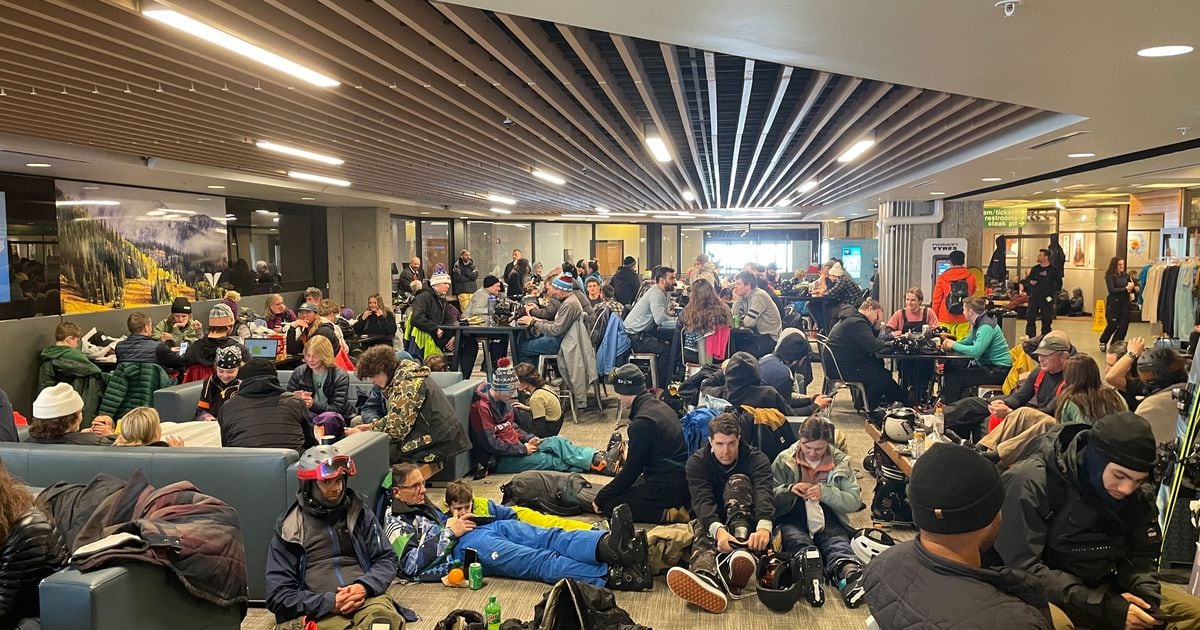Could a gondola help during future interlodge situations at Utah ski resorts?
On social media, several took the interlodge as a chance to point out what they see as shortcomings in UDOT’s plan to build a gondola in the canyon. The Snowbird Center and Creekside day lodge were packed with skiers and snowboarders during an unusual midday interlodge order Friday afternoon, issued after an avalanche slid across State Highway 210 near one of the entrances to the ski resort. Industry leaders think that had a gondola in place in Little Cottonwood Canyon, everyone could have been home sooner, even if it likely couldn't run during interl Lodge or avalanche mitigation. On social media, several took the interlod as a chance to point out what they see as shortcomings in the Utah Department of Transportation’s plan to build a gondaola in the canyon. UDOT has explored a tri-cable system, which can safely move people even in 68 mph winds.

Опубликовано : 2 года назад от в
The Snowbird Center was packed with skiers and snowboarders slumped on couches and sprawled out on the floor during an unusual midday interlodge order Friday afternoon, issued after an avalanche slid across State Highway 210 near one of the entrances to the ski resort.
Dave Fields, president and general manager at Snowbird, said Saturday, “We had several thousand people crammed into the Snowbird Center and the Creekside day lodge and the Cliff Lodge, killing time, playing cards and waiting to go home.”
The interlodge order — which restricts all outdoor travel and requires people to shelter inside a permanent structure — was lifted around 6:30 p.m. Friday.
“But it’s still a very slow and very dangerous drive down the road,” Fields said. “And at 9:53 last night, when I looked out my window to Cliff Lodge at the traffic, there was still vehicles bumper to bumper on the highway.”
On social media, several took the interlodge as a chance to point out what they see as shortcomings in the Utah Department of Transportation’s plan to build a gondola in the canyon. However, some industry leaders think that had a gondola been in place in Little Cottonwood Canyon, everyone could’ve been home sooner, even if it likely couldn’t run during interlodge or avalanche mitigation.
“I think we’ve had many instances this winter where a gondola would have been a much safer, more reliable, and efficient way of getting people in and out of the canyon,” Fields said. “And yesterday was the best example of that.”
Chris Adams, board president with Wasatch Backcountry Alliance, disagrees. Since the gondola wouldn’t run during the interlodge order, it would’ve been closed until 6:45 p.m., when the order was lifted. “And then there would have been a huge line for the gondola,” Adams said, “so it still take hours to get down [the] canyon, same as driving. So I don’t think it would have made a difference.”
‘We had several avalanches come down’
Fields said that it didn’t snow much overnight Thursday and into Friday. But then Friday morning, around 7 or 8 a.m., it started snowing “extremely hard,” about 4 inches an hour between 9 a.m. and 10 a.m., and then 5 inches an hour between noon and 1 p.m. “We had several avalanches come down after the road closed at noon,” he said.
One avalanche in the White Pine area was estimated to be 15 feet deep and 300 feet wide, according to UDOT. About an hour or less before there were vehicles on the highway, Fields said. “This is the challenge that UDOT faces when they’re trying to manage resident, employee and guest access to the canyons with safety.”
UDOT spokesperson John Gleason said that on a day like Friday, “the gondola would offer more reliable uphill and downhill travel times due to the separate alignment. Having an alignment independent of the road means that passenger travel times are not affected by slow drivers, congestion and vehicle crashes when conditions are poor.”
While the gondola probably wouldn’t load passengers during interlodge, Gleason continued, “it could begin loading as soon as that restriction is lifted. Additional cabins could be added to meet the travel demands resulting from extended closures.”
One of the gondola systems UDOT has explored, a tri-cable (3S) system, can safely move people even in 68 mph winds.
With a tri-cable gondola system, Fields said they could’ve moved all of the resort guests out of Little Cottonwood Canyon in two hours.
“UDOT and their avalanche teams are doing an absolutely amazing job this year of trying to keep the road open,” he said. “But as long as you have vehicles under these avalanche slide paths, it’s a dangerous scenario. And that’s why I support [a] gondola. I don’t think putting cars on the highway is a good idea.”
Each 20-seat cabin would carry up to 35 occupants, traveling between 16 and 18 mph, potentially moving 3,000 to 4,000 people per hour, The Salt Lake Tribune previously reported. That would outpace the road’s 1,000-vehicles-per-hour rate, assuming 2.2 occupants per car. Travel time to Snowbird would be 23 minutes, and 27 to Alta, a few minutes longer than a bus ride when traffic is flowing freely.
In August, (UDOT) concluded that a gondola would be the best solution for the canyon’s transportation crush, but the department is yet to issue a finalized report recommending the building of it.
Темы: Utah
